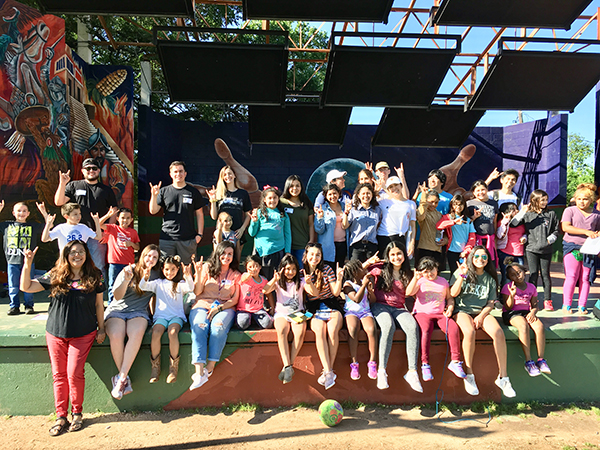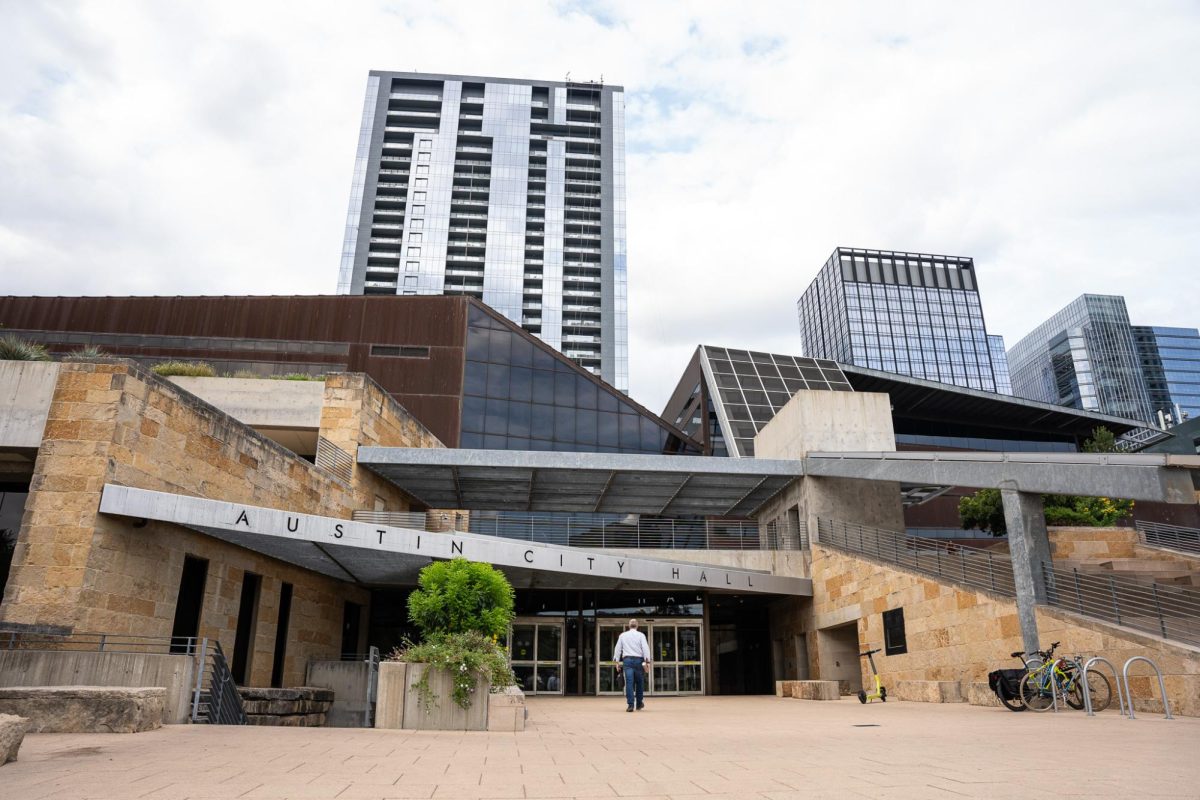A new approach to a UT-Austin course is helping students learn about the history of American education by studying the intersection of race and education in Austin.
Luis Urrieta, a professor of cultural studies in education, has taught the course “Sociocultural Influences on Learning” since the fall semester of 2006. After recent restructuring to the class, the course now allows students to interact with local communities and schools in addition to reading textbooks and having discussions. This spring, Urrieta’s students engaged with Austin elementary school students.
As part of the course, Urrieta takes his classes on a “caminata” — a walk through the East Austin community and Austin ISD’s Zavala Elementary.
“One of my colleagues first introduced me to ‘the walk’ nine years ago, and I saw how valuable the walk was for the students, so I decided to incorporate it in my class,” Urrieta said. “I have since encouraged my graduate students to incorporate it into their curriculum and for the multiple sections for this course.”
The walk is a way for students to visit local communities and see Zavala Elementary, a once-segregated school that opened in the 1930s for Mexican-American students.
“This course not only focuses on Mexican-American and African-American experiences in education, but because we are in Austin, there is a particular focus on Austin communities,” Urrieta said. “This focus helps expose students to critical issues in education and help them navigate education within a sociocultural landscape.”
Urrieta’s classes this past semester read about and discussed topics relating to the surrounding community with a second grade class.
“I have wanted my students to be able to have a good role model and for them to be exposed to university students,” said Belinda Jimenez, a second grade teacher at Zavala Elementary. “But for the UT students, the benefit for them is so that they get a real world, hands-on experience with a community like Zavala and the east side of Austin.”
Jimenez said teachers and students should be exposed to different types of communities, especially because of the large population of English language learners in Austin.
Ashley Deñó, a youth and community studies and African and African Diaspora studies senior, participated in the walk and said visiting Zavala was a reminder of the history of racism in Austin.
“Being able to see this physical reminder of segregation was powerful,” Deñó said. “But the location of Zavala in what we picture now when we think of East Austin is very important. Austin was heavily segregated by design, and the displacement and removal of African Americans and Latinxs from West Austin was intentional.”
Deñó said this course is important because it allows teachers and students to learn about the history of racism and other forms of oppression in education. She also said it promotes listening to and understanding the experiences of minority students.
“This class only further emphasized something I already knew, which was that minoritized students, especially black and Latinx students, have value and are coming into the classroom with their own valuable experiences and cultural wealth, even if it doesn’t resemble the cultural wealth that tends to have value in the United States,” Deñó said.





















